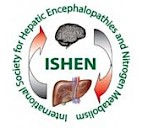Aims: Although ammonia is the central component in the pathogenesis of hepatic encephalopathy, it is believed oxidative stress (OS) plays a role in the pathogenesis of brain edema during liver disease. We previously demonstrated that portacaval shunted hyperammonemic rats do not develop OS or brain edema (Bosoi et al., FRBM, 2012). To define whether a synergistic effect exists between hyperammonemia and OS in the development of brain edema, the present study investigates the role of OS in the pathogenesis of brain edema in PCA rats following glutathione depletion by diethyl maleate (DEM). Methods: We evaluated the effect of DEM (1 mg/kg/day intraperitoneally for 10 days starting day 18 after surgery) in PCA and SHAM-operated rats. Rats were sacrificed at day 28 and OS was evaluated by measuring arterial and cerebral malon-dialdehyde (MDA, commercial kit), reactive oxygen species (ROS, DCFDA fluorescence), and 4-hydroxy-2-nonenal (HNE, Western blot). Ammonia levels (commercial kit) were also assessed. Frontal cortex brain water was measured using a specific gravimetric technique. Results: DEM induced a significant increase in plasma MDA, ROS and HNE levels in PCA rats. No increase was detected in DEM-treated SHAM-operated controls. No changes in cerebral OS markers were observed in any group. Ammonia levels increased in non-treated and DEM-treated PCA vs SHAM-operated rats (p<0.001) and remained unchanged between non-treated and DEM-treated PCA groups. Brain water content increased in DEM-treated PCA rats vs non-treated PCA rats (PCA+DEM: 78.45±0.13% vs PCA: 77.38±0.11%, p< 0.001). Conclusions: DEM treatment in PCA rats induced systemic, not central OS. This, superimposed on hyperammonemia, led to the development of brain edema. Similar DEM doses did not result in increased OS and brain edema in SHAM-operated rats, suggesting PCA rats are more susceptible to OS. Our findings support a synergistic effect between hyperammonemia and systemic OS in the pathogenesis of brain edema in hepatic encephalopathy.






